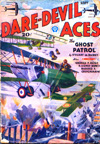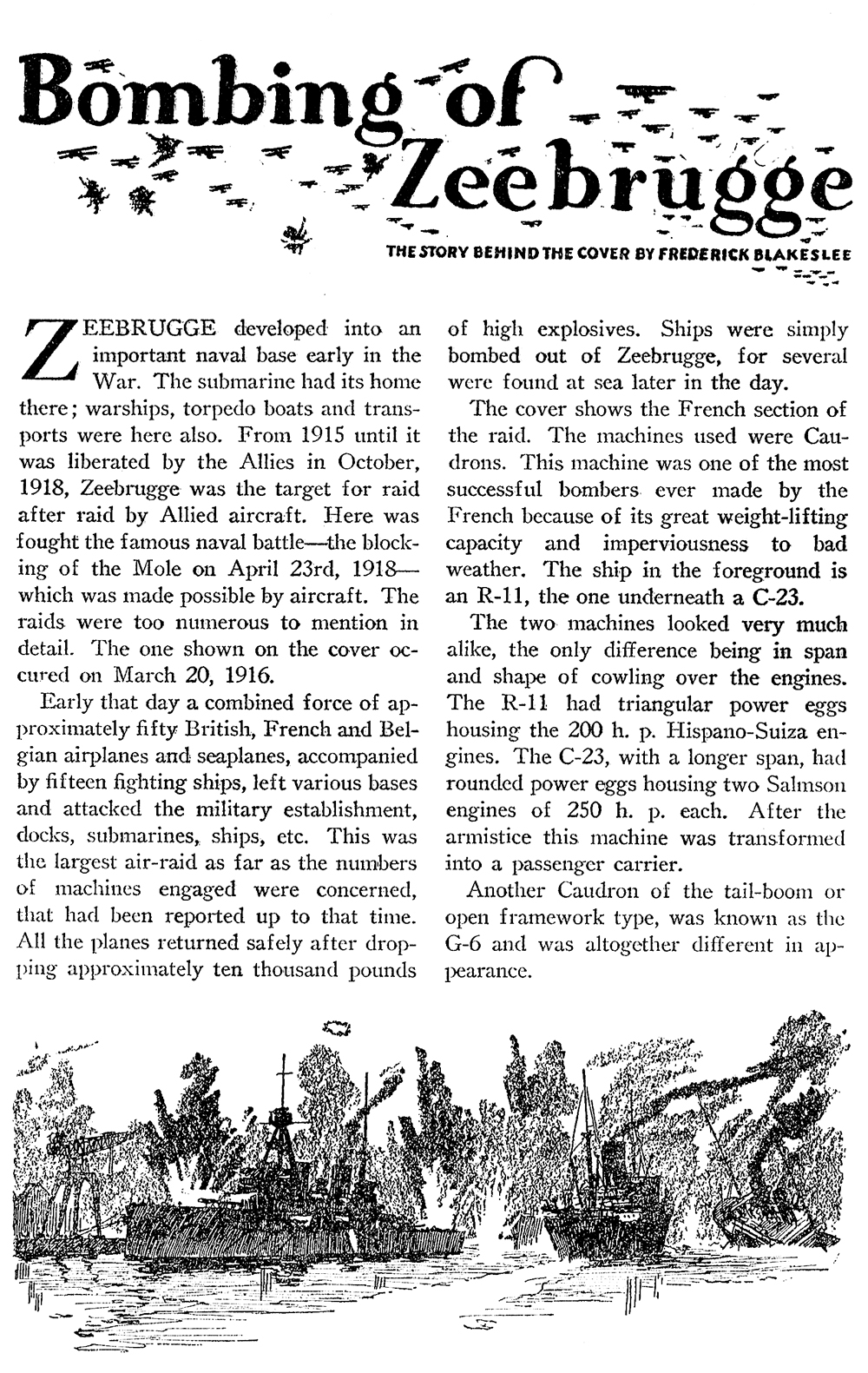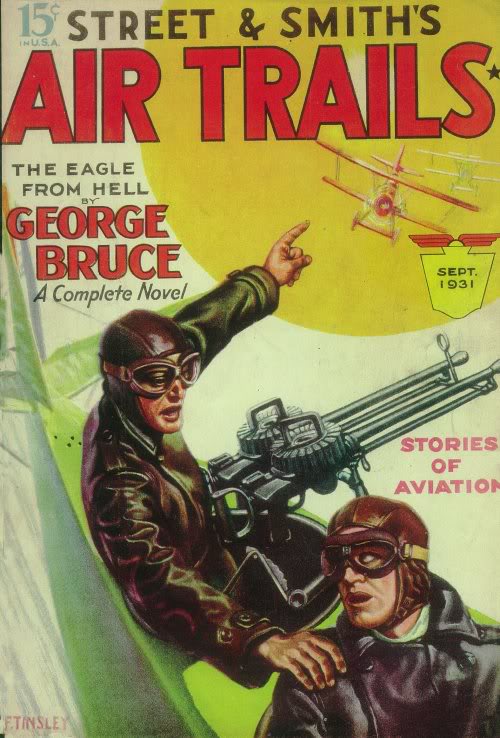Frederick Blakeslee’s “The Giant Bomber”
Back with another of Frederick Blakeslee’s “The Story Behind The Cover.” Each issue of Popular Publication’s Dare-Devil Aces had a fantastic scene of air combat gracing its cover. Frederick Blakeslee painted all 135 covers—and each had a story behind it. This is the story behind the cover of the October 1932 issue—”The Giant Bomber”…
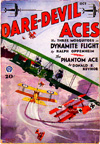 BRITISH Intelligence reported a contemplated raid on London by a large force of bombers. A certain squadron near Dunkirk was asked to intercept these ships and to destroy as many as possible. Consequently the air was filled with British craft patroling the coast. As the weather became unsafe for flying, most of the patrols returned to their bases, but several, which had become separated, did not return for some time. Let us follow one of these, an S.E.-5 flown by Lt. Allen Archer.
BRITISH Intelligence reported a contemplated raid on London by a large force of bombers. A certain squadron near Dunkirk was asked to intercept these ships and to destroy as many as possible. Consequently the air was filled with British craft patroling the coast. As the weather became unsafe for flying, most of the patrols returned to their bases, but several, which had become separated, did not return for some time. Let us follow one of these, an S.E.-5 flown by Lt. Allen Archer.
Archer was returning to his drome when suddenly a huge bomber hove into sight, escorted by three Fokker triplanes flying high above and ahead. Archer was sure that this was the vanguard of the raid and looked anxiously about for help. Not an Allied plane was in sight however, so it was up to him to do something by himself. To attack this huge monster with his comparatively tiny S.E.-5 seemed futile. However, he realized the number of women and children who might not see tomorrow should this ship arrive over London; so despite the heavy odds he decided to attack. He had no sooner made his decision than he found himself in a savage combat with two of the Fokkers. He shot one of them down and, with the other on his tail, headed for the lumbering giant.
As he drew near he let go a burst, but as far as he could see it did no damage. Yet to his utter surprise the bomber gave a lurch, a man fell or jumped overboard and the engines on the left burst into flames. The bomber tipped up and dove into the clouds. Archer was so occupied with the two remaining Fokkers that he was unable to follow the bomber down. After a short combat he drove them off and returned to his field. The bomber landed in Germany, so what happened was never known by the Allies.
The bomber was a Zeppelin Five-engined “Giant.” Even today it would be accounted a mammoth ship. An idea of its size may be had from the fact that it weighed a little over fourteen tons, with a span of about 136 ft. and a length of 72 ft. It carried a crew of nine or ten men. Compare its size with the men in the drawing below. One man has his hand on the propeller, two more are sitting on the fuselage.
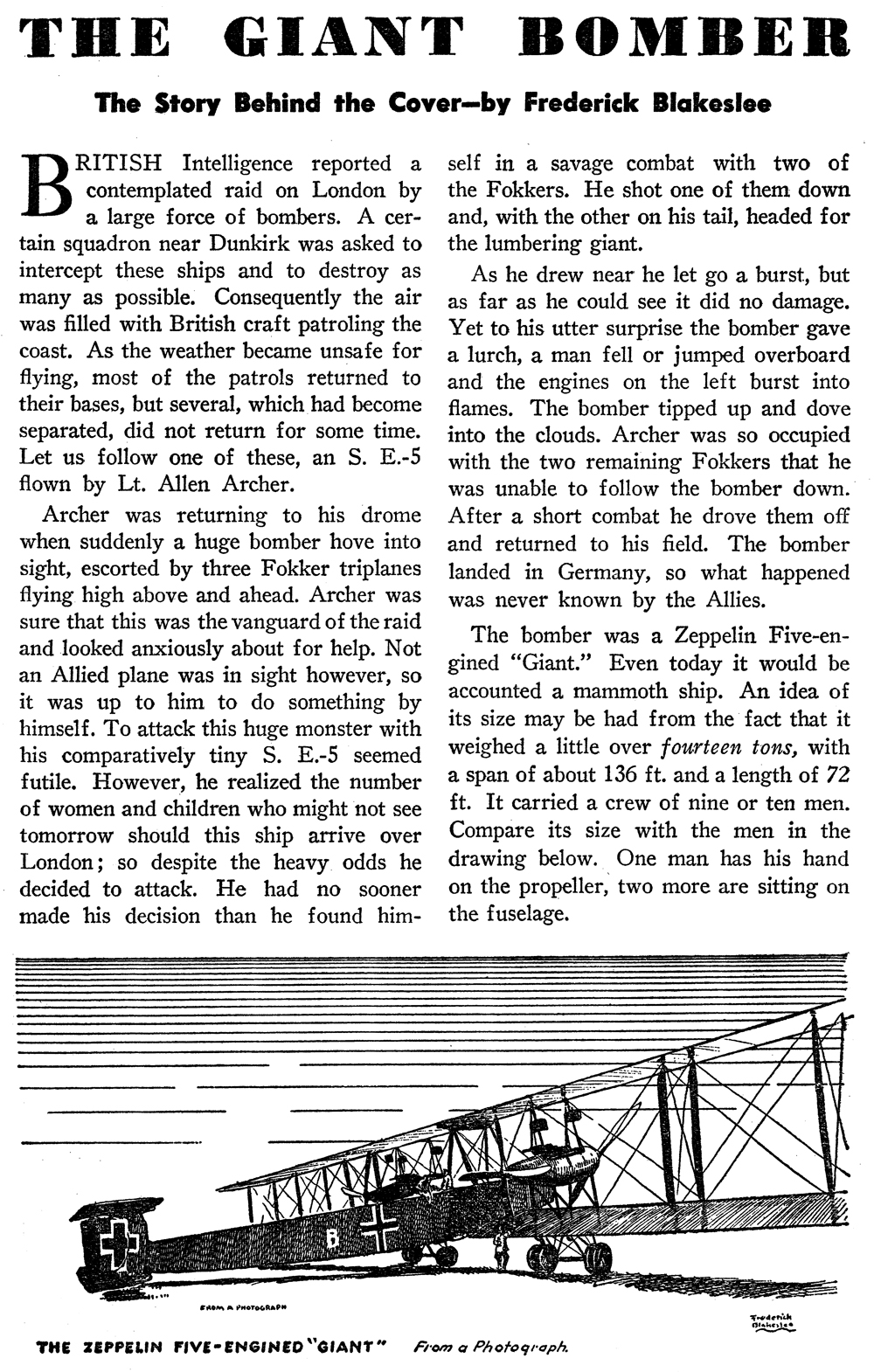
“The Giant Bomber: The Story Behind The Cover” by Frederick Blakeslee (October 1932)
Check back again. We will be presenting more of Blakeslee’s Stories behind his cover illustrations.





